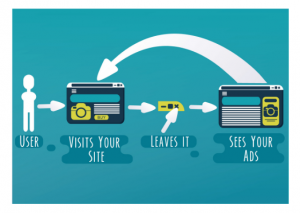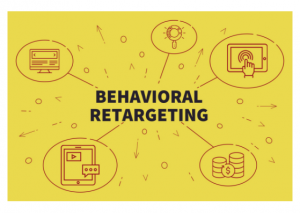Beginner’s Guide to Retargeting
 Businesses spend a great amount of time and resources attracting people to their website. But, just 2% of first time visitors to an online store convert. But wouldn’t you just love to push people back to your website in the hope they’ll convert the second time round? Instead of starting right at the very beginning with the next new visitor to your website, retargeting can be a way to re-engage previous visitors.
Businesses spend a great amount of time and resources attracting people to their website. But, just 2% of first time visitors to an online store convert. But wouldn’t you just love to push people back to your website in the hope they’ll convert the second time round? Instead of starting right at the very beginning with the next new visitor to your website, retargeting can be a way to re-engage previous visitors.
Whilst it might be annoying to have such a small percentage of visitor’s covert, it’s actually very understandable.
When was the last time you made a purchasing decision? Particularly a big purchasing decision, like a holiday, piece of furniture or a monthly sign-up to a service?
Did you buy right away? Or, did you browse other websites, conduct research and compare different deals?
With a careful, well-thought out strategy, retargeting can be the key to driving conversions and sales. In today’s article, we’re going to be getting started with the basics of retargeting: what retargeting is, how it works and the different styles of ads.
What’s Retargeting?
Chango identified 7 types of effective retargeting, lets take a look:
1. Target consumers based on their searches in Google, Yahoo! and Bing
2. Targeting based on the viewing of specific products, actions or actions not taken (like abandoning your shopping basket)
3. Targeting by how consumers landed on your site
4. Targeting individual consumers who are interacting with your email communications
5. Target consumers who consume similar content to your existing customers
6. Targeting based on interaction with distributed content (like a Facebook page or video)
7. Targeting those who have visited a partner website that shares a similar interest / topic to your own
Essentially, retargeting is a style of online advertising that can help a brand bring previous website visitors back. It’s helps businesses reach the 98% of people who don’t convert on their first time visiting a website.
Think about your own experiences …
For instance, I regularly look at online clothing stores and then the ads start to appear on my Facebook. It’s a form of retargeting – I visited their website, looked at a few products but I left without making a purchase. The clothing store take the opportunity to retarget the products at me as a sales attempt through a different platform.
How Does Retargeting Work?
It’s a cookie-based technology that allows businesses to track and target consumers with ads on various platforms.
The method can alter, but this is pretty much what happens:
- A consumer lands on a website and takes a look around the site
- A code, called a cookie, is placed on the consumers browser
- The consumer exits the website
- They might continue browsing on different websites, or exit their browser completely
- At some point (maybe a short as a few minutes or as long as a few weeks) the visitor will enter a website that hosts ads
- The cookie that was previously stored on the consumer’s browser will trigger personalised ads
Whilst some consumers may find retargeting ads invasive and annoying, most don’t. Some might be pleased that the ad reminded them to go back and make a purchase they had forgotten about. Retargeting ads, whilst they do benefit the business, are there to help consumers find the same / similar products they’re previously shown interest in.
Why not check out our Digital Marketing Terms Glossary?
About the author:
Marie Harwood is a Digital Marketing Assistant at Different Gravy Digital, Hale, Cheshire.
Different Gravy Digital are a full service Digital Marketing Agency operating in the Hospitality & Leisure, Financial Services, Legal & Property sectors. Products and services range from; 3D & 360° Tours, Website Design & Build, Social Media, Video Production, Search Engine Optimisation (SEO), Content Creation, Email Marketing, Online Feedback / Review Systems and Paid Advertising (Google, Bing and Social Media).
Contact Details:
marie@differentgravydigital.co.uk
0161 706 000
120a Ashley Road, Hale, Altrincham, Cheshire, WA14 2UN